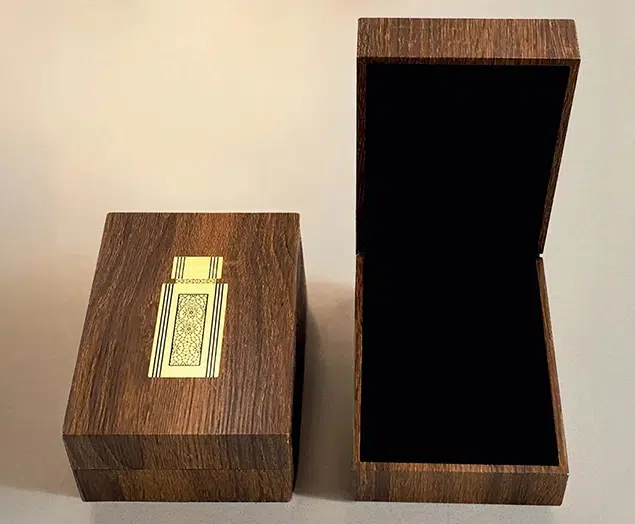Amazon FBA Packaging & Labeling Guidelines – Packaging Requirements, Process, UPC Barcodes & More
Getting your product packaged and labeled correctly for Amazon FBA can be rather confusing, especially if it’s your first time. At luxurypaperbox.com, this is an Amazon FBA shipping box packaging and labeling guidelines, that tell you the Amazon FBA packaging requirements rules, fees, tips on how to properly package and label your products from beginning to end, so that you don’t get your inventory rejected or subjected to penalty fees.

Amazon FBA Packaging & Labeling Guidelines – Packaging Requirements, Process, UPC Barcodes & More For FBA Amazon
The main types of packaging that you’re going to encounter are a box, a polybag, or a blister pack. Which one you choose should suit the product as far as protecting it from damage, holding all the contents and the unboxing experience. For example, a box can be a generic plain cardboard box or a custom-designed box. If you believe a custom-designed mailer box package will add value to your product, then you should consider it. Products that don’t need to come in a box can be put in what’s called a polybag, there are generic plain clear poly bags as well as designer bags and bags with insert cards in them to add value. As for the blister packs, some products are better suited for this type of packaging, so you can show off the contents.
Box Packaging Guide
Regardless of which type of packaging you go with, everything that’s included in the unit must be contained within the package. Amazon will not accept loose items or if your product comes in multiple pieces, which means if your product does have multiple pieces, it should all be contained within one package. Always double-check the overall size of your packaging, so that it doesn’t bump your product into the next sized amazon free tier. If you want to stay within the small standard size tier, your product needs to be within these size constraints. If your packaging doesn’t meet these requirements, it’ll bump you into the next size tier which will increase your fees.
When it comes to boxes, you want to make sure that it meets requirements as follows
- The boxed units must be six-sided.
- Must have openings or a lid that will not be easily open on its own and if it can, it must be taped or glued or stapled shut.
- It cannot collapse when medium pressure is applied to any of its sides.
- If the box unit has perforated size or openings, the product must pass a three-foot drop test. Consisting of one drop on each side
- and one drop on the corner. If the product does not pass the drop test, it must be placed in a polybag with a suffocation warning.
Poly Bags Requirements
If your product comes in a polybag where the opening is at least five inches or bigger, it needs to have a suffocation warning on it and it needs to either be printed on it or attached as a label. If you don’t do this, it may lead to the items being re-bagged which will incur more fees.
- The warning should be printed or placed in a prominent location and illegible font size for the bag and it gives you recommendations for how big the label and print font size needs to be here.
- The thickness of the bag must be at least 1.5 mils
- The bag must be transparent.
- The bag must have the barcode meaning the UPC or EAN barcode in a scannable location through the bag or on the outside of the bag.
- The bags must be completely sealed.
- The bag or shrink wrap must not protrude more than three inches past the dimensions of the product.
Label Requirement
If you’re importing your product from outside the U.S., by law the country of origin needs to be on every single unit. If your product is coming from China, every unit needs to have made in China on it. If you’re having a custom gift package design, you can have the country of origin and the FNSKU incorporated into the package design. So that they can be directly printed onto the box instead of using a sticker. If you’re going to use a sticker, you can combine the country of origin and FNSKU onto one sticker, that way you can save on costs and make the packaging look cleaner. For whatever reason your supplier can’t do the labeling for you, or you don’t want them to, you can have Amazon do it, but it’ll cost you 30 cents a unit. Make sure your product is correctly labeled, because if you send them to Amazon, and they’re wrong, incorrectly labeled or missing. Amazon will charge you to fix them, they’re called unplanned service fees. For example, if the label is missing or incorrectly labeled, they’re going to charge you a penalty fee to fix it. If you continue to keep doing it that penalty fee goes up.
Barcode Requirements
Every one of your units needs to also have a barcode on it. If you’re doing private label, always putting the FNSKU on every unit, not the upc barcode. By using the FNSKU, it prevents the possibility of your units being co-mingled with another seller’s units. You can get the f and FNSKU from the manage inventory page by clicking the drop-down menu and going to print item labels, or while you’re creating a shipping plan. If you choose who labels as a merchant, you’re going to label your units to print the FNSKU labels. One important thing to note, the FNSKU must be on the outermost packaging so that it can be scanned easily.
Shipping Carton Requirements
The next set of packaging and label requirements are for your shipment. The requirements for the shipping cartons themselves. The shipping cartons are what your supplier is going to ship your products to Amazon. If you ordered a thousand units of can openers, how are those 1 000 units going to be packaged up and labeled for shipping to Amazon? For most people starting out, you’re going to be shipping using SPD or a small parcel delivery option. In this case, you need to make sure your shipping cartons meet these requirements, they must not weigh more than 50 pounds, can not exceed 25 inches on any side. For partnered carrier shipments, a maximum of 200 units per carton and 500 units per carton for non-partnered carrier shipments.
What’s A Partnered Carrier Shipment?
Because Amazon does so much volume, they’ve worked out deals for domestic shipments within the US where you can save a ton of money versus arranging the shipment yourself through UPS, FedEx or DHL. If you’re shipping domestically to Amazon’s fulfillment centers, then definitely take advantage of the partnered carrier program. The savings are sometimes more than half the price. The Amazon partner SPD carrier program offers deeply discounted rates and the costs are built to your account as an inbound transportation charge.
What Is Shipping Plan?
For all shipments going to Amazon, Amazon requires a shipping plan. The shipping plan lets Amazon know what you’re shipping in, and the shipping plan will tell you which fulfillment centers to ship to and print out the accompanying shipping labels to put on the shipping cartons. The Amazon shipping labels are simple to identify the shipping cartons when they arrive at Amazon, so they know what it is and who they belong to. These Amazon shipping labels have nothing to do with the physical shipping of your products. When you complete your shipping plan, you can download these shipping labels and email them to your supplier, so they can put them on your shipping cartons. If you’re shipping multiple boxes of different products or quantities, make sure that the correct labels go on the corresponding shipping cartons, so they go to the right fulfillment center
What Are Shipping Carrier Labels
To physically ship your products, you need to arrange a shipment with a shipping carrier like UPS, FedEx or DHL, they’ll provide you with their own shipping labels. These labels also need to go on each one of your shipping cartons. You most likely won’t be dealing with these, because your supplier will arrange the shipment and they’ll generate these labels and put them on the cartons for you.
How Does Your Product Ship To Your Customers?
If you’re doing FBA, Amazon will handle all the packaging and labeling for you. When someone buys your product, Amazon will pick your product off the shelf, put it in a shipping box or padded envelope and label it for shipping. You don’t need to worry about or handle any part of this final step. However, if your product is fragile in any way, you do want to make sure that the packaging that you created for it, with your supplier is sufficient to protect it from damage, even though Amazon is going to put it in a shipping package when someone purchases it. Ultimately, the responsibility is still on you to make sure that the product is properly packaged during shipping.


Top 10 Creative Cosmetic Packaging Design Ideas & illustrations 2023 | Luxury-Paper-Box.Com

10 Customs Of The Spring Festival (Lunar New Year) You Need To Know

Top 10 Best Lattafa Perfumes for Women & Men in 2024

Top 10 Best Packaging Design Software 2023 (Free & Paid)

Why Choose MDF Boxes Over Wooden Boxes?



 kali@luxury-paper-box.com
kali@luxury-paper-box.com




